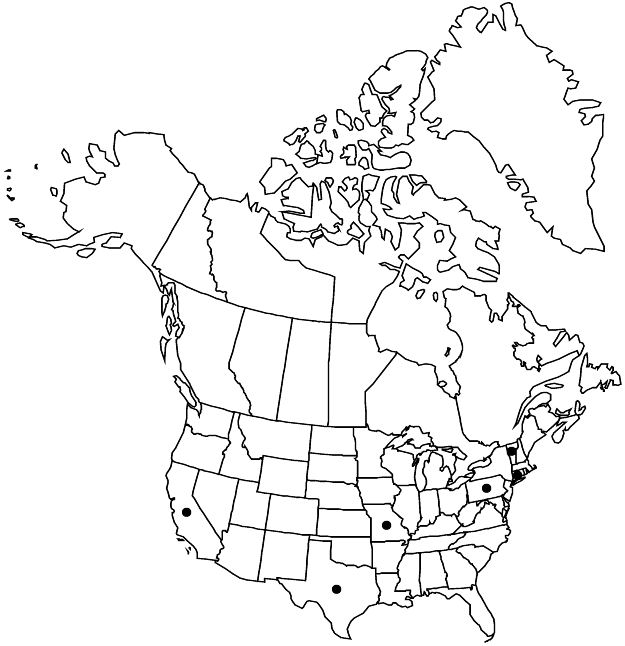Lavatera trimestris
Sp. Pl. 2: 692. 1753.
Herbs, annual, usually 0.5–1.4 m. Stems sparsely hispid-hairy, hairs simple or few-rayed, glabrate in age. Leaves reduced distally; stipules narrowly triangular, 2–6 mm; petioles equaling blades proximally, 1–7(–13) cm, reduced distally ca. 1/2 blade length; blade green, orbiculate, 2.5–7(–12) cm, proximal leaves unlobed to shallowly 3–5-lobed or angled, distal leaves shallowly palmately 3–7-lobed, lobes triangular, margins crenate or dentate (serrate), apex acuminate or acute to obtuse, surfaces sparsely bristly to glabrous. Inflorescences solitary flowers, clustered towards stem tips, pedicellate. Pedicels 2(–7) cm, elongating in fruit; involucellar bractlets connate halfway, subequal to or 3/4 length of calyx, lobes wide-deltate, 0.6–1 cm, distinctly enlarging in fruit, apex acute. Flowers showy; calyx divided ca. 1/2 its length, campanulate, 1–1.5 cm, enlarging in fruit, ± enclosing fruit, sparsely short stellate-hairy, lobes triangular to narrowly ovate, apex acute to acuminate; corolla 3–7(–10) cm diam., petals rose-pink to white with darker rose veins, 2.5–3.5(–7) cm, bases strongly overlapping (obscuring calyx between), apex blunt to rounded; staminal column puberulent; anthers on upper 3/4 of stamen column, pinkish; style ca. 12+-branched. Mericarps ca. 12+, 3.3–3.7 mm, ridged, covered and obscured by disclike expansion of central axis, glabrous, transverse-reticulately veined on back. 2n = 14.
Phenology: Flowering Jun–Oct.
Habitat: Disturbed habitats
Elevation: 0–600 m
Distribution

Introduced; Calif., Conn., Mo., Pa., Tex., Vt., s Europe, w Asia.
Discussion
Lavatera trimestris, the type species of the genus, is occasionally cultivated as a garden ornamental; it rarely escapes or naturalizes. Most records are of plants that did not persist. It is easily distinguished from other commonly cultivated mallows by the disclike expansion of the central axis of the fruit above the mericarps.
Selected References
None.